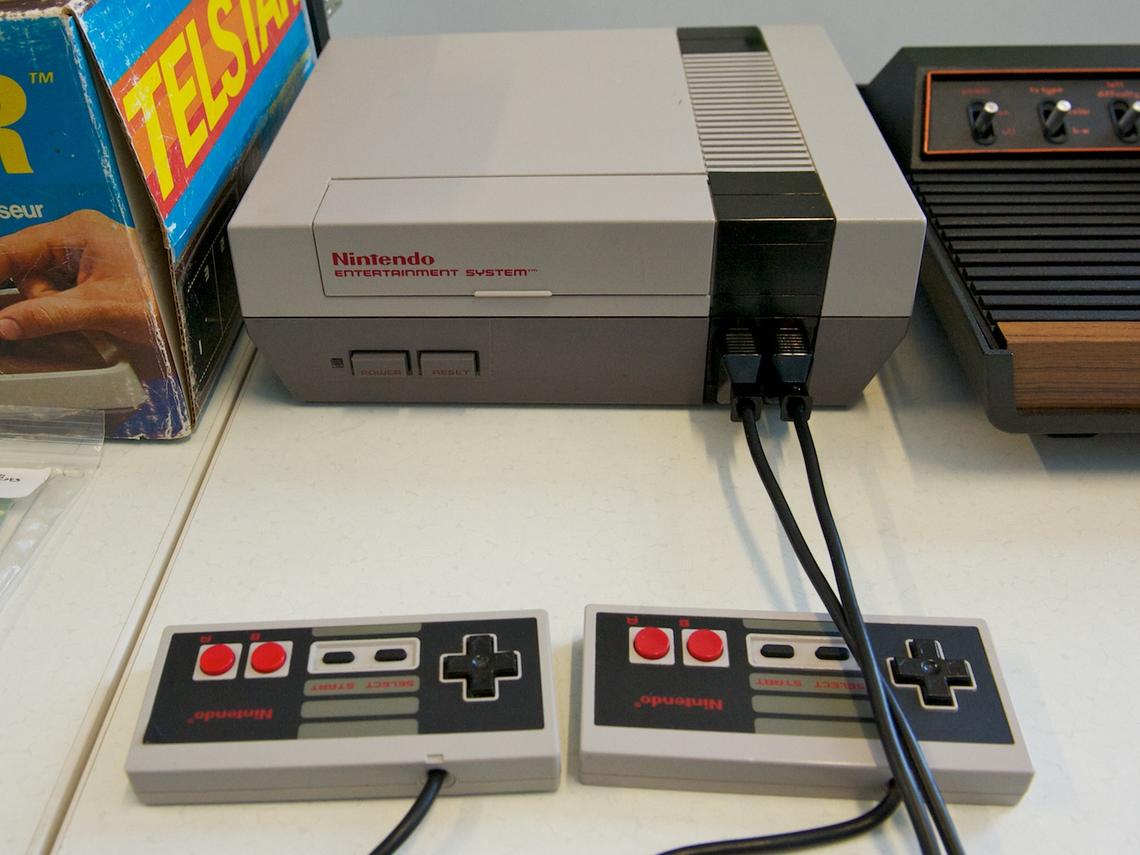Nov. 5, 2018
Mario, Luigi and Pac-Man all the rage in the Taylor Family Digital Library

Intellivision, Nintendo and Atari consoles in UCalgary's Archives and Special Collections.
Dave Brown
It was 1980 when Pac-Man started gobbling up dots and dodging ghosts. In 1983, players tried to get their vehicles to the end of a level while bumping enemy vehicles into obstacles in Bump ‘n’ Jump. A few years after that, Mario and his brother Luigi started jumping on mushrooms to save the princess in the castle.
On Tuesday and Thursday this week, you can play some of the world’s first console video games in the foyer of the Taylor Family Digital Library (TFDL). The event marks International Games Week, organized by the Games and Gaming Roundtable of the American Library Association to encourage people to connect with libraries and learn more about the value of games.
“We’ll have the vintage consoles set up to some cathode ray tube monitors, technologies you don’t see very often anymore,” says Christie Hurrell, librarian for digital initiatives and scholarly communication with Libraries and Cultural Resources (LCR).

Nintendo controllers.
Dave Brown
Come play Pac-Man, Bump ‘n’ Jump and Classic Mario
Three games will be ready for play: Atari’s Pac-Man, Intellivision’s Bump ‘n’ Jump and Nintendo’s Classic Mario — all from LCR’s collection of video games and consoles.
“At last count we have about 2,000 games in various formats,” says Hurrell. “When it comes to console games and computer games, we have quite a large collection for an academic library.”
All kinds of scholars on campus take advantage of the collection. Computer science faculty and students use the games to study the history of programming and the development of game design over the decades. Dr. John Aycock, PhD, associate professor of computer science in the Faculty of Science, has used the vintage game collection to help write papers and a book about what he calls “retrogame archeology.”
Faculty and students delving into cultural studies are also interested in the games that date back 40 years. Not only do video and computer games feed into the “cultural zeitgeist of the time,” they are also re-interpreted over the decades into literature and film.
“Gaming is a huge cultural industry,” says Hurrell. “In terms of economic and cultural impact, I think gaming is right up there with fiction, film and television. We see lots of professors of different kinds of literature, history or communications studies coming in to expose their students to games, particularly vintage games because they can’t get access to those in other places.”
Vintage games can give current gamers a sense of how the games evolved.
“When you look at Legend of Zelda, a very well-known franchise that Nintendo has, you can trace its roots back to Atari’s Adventure,” says Jed Baker, digital media and network co-ordinator in the TFDL. “It was the first graphics-based Dungeons-and-Dragons-type game and was in turn inspired by a text-based computer game.”
Come play a vintage game in the TFDL foyer Nov. 6 and 8, 12:30 to 2 p.m.

Atari Console.
Dave Brown
